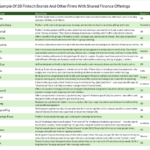In 2022, I examined the Anti-Money Laundering (AML) landscape in Asia Pacific (APAC), highlighting the key trends and technologies. Since then, much has changed. New hotspots have emerged for money launderers, while innovative technology has also emerged to fight back against them. Notably, Generative AI has catapulted itself into the forefront of this fight. Forrester sees that:
- Shell companies have become a hotspot for money laundering. Criminals have become adapt at exploiting loopholes present in APAC countries’ regulatory frameworks to conceal illicit funds from criminal activities.
- Crypto and trade-based money laundering are still on the rise. Crypto’s widespread adoption, alongside APAC’s inconsistent regulations have empowered criminals with perceived anonymity, fueling illicit cross-border transactions. Furthermore, APAC’s position as a hub for global commerce has made it susceptible to trade-based money laundering due to the sheer volume of cross-border trade occurring in the region. With more trade, criminals are given ample opportunities to manipulate legitimate trades to guise illicit transactions.
- AML is also becoming increasingly expensive and challenging for banks. Criminals constantly improve their money-laundering techniques and the fragmented regulatory landscape leaves more opportunities to take advantage. Banks are struggling with rising investigation and due diligence workloads, fragmented AML regulations alongside inefficient name-matching.
The trends outlined above are causing companies in Asia Pacific to focus on several key technologies to address money-laundering challenges:
- Generative and Explainable AI: While still in early stage, some banks are starting to use generative AI (genAI) to enhance risk management insights and scores. GenAI is also being utilized in core transaction monitoring and risk decision-making processes. Explainable AI (XAI) has also become key. XAI provides transparency, enabling financial institutions and regulators to understand how AML algorithms arrive at their decisions. Vendors are increasingly providing XAI-based AML models for banks.
- Behavioral biometrics: Some banks have already started using behavioral biometrics as additional layers to detect mule accounts before an actual money transfer occurs. The combination of advanced biometrics and behavioral analytics can enhance the accuracy and effectiveness with which AML systems detect and prevent money laundering.
Nevertheless, financial institutions can’t successfully battle increasingly sophisticated money-laundering risks on their own. Forrester sees that there has been an increase in public and private collaboration on data-sharing. One key example being the Monetary Authority of Singapore’s (MAS) collaboration with six major banks in Singapore. The collaboration launched a digital platform (COSMIC) to enable secure sharing of information across banks to deter financial crime, which launched in April 2024.
In Forrester’s recent report, Top Trends Shaping Anti-Money Laundering In Asia Pacific In 2024, we highlighted the top trends, technology adoption, and regulatory requirements in the AML market in APAC. The report also describes how AML professionals should respond to these trends. To learn more details about AML trends in Asia Pacific, Forrester clients can read the full report, or schedule an inquiry or guidance session with me.








